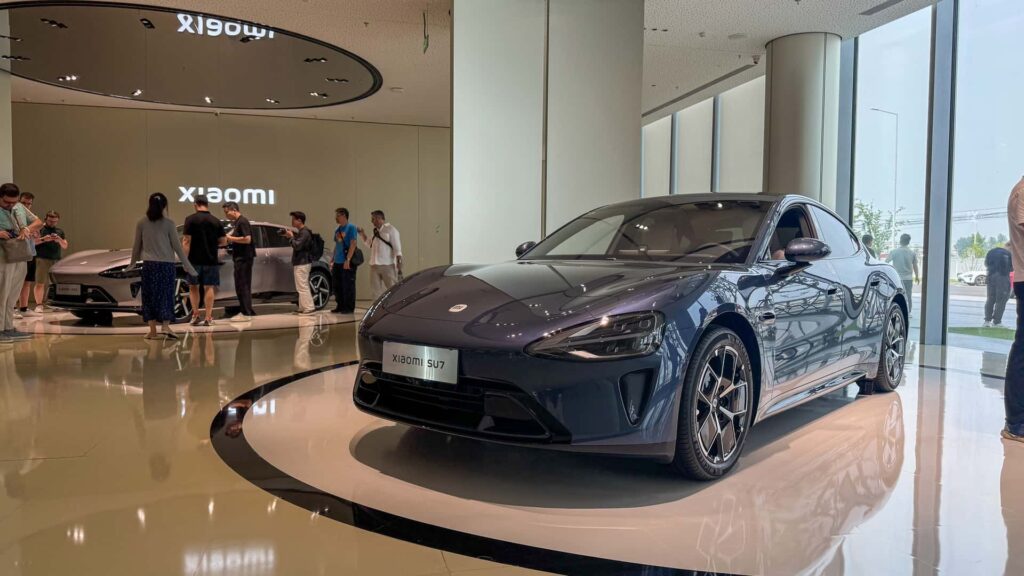
China has rapidly ascended to the forefront of the global electric vehicle (EV) industry, a development that has not gone unnoticed by international automotive leaders. Ford CEO Jim Farley recently described his visits to China as “the most humbling thing” he has ever experienced, highlighting the advanced technology, competitive costs, and superior quality of Chinese electric cars. Farley’s comments came during an interview at the Aspen Ideas Summit, where he shared insights from his frequent trips to China over the past year.
Farley’s admiration for China’s EV industry underscores the significant strides the country has made in transforming itself into a global powerhouse seemingly overnight. “It’s the most humbling thing I’ve ever seen,” Farley remarked, emphasizing the cutting-edge technology integrated into Chinese vehicles. He noted that Chinese firms have excelled in creating a superior in-vehicle digital experience, a sentiment echoed by many industry observers.
China’s Technological Edge
The automotive industry has long aspired to develop “smartphones on wheels,” a vision that Chinese companies have taken to new heights. While companies like Tesla have pioneered the integration of technology into vehicles, many automakers are still striving to catch up. Farley pointed out that Chinese vehicles feature advanced digital interfaces and a host of tech features that are yet to be matched by Western counterparts.
According to Farley, “Huawei and Xiaomi are in every car,” referring to the seamless integration of technology by these tech giants. He described a scenario where drivers do not need to pair their phones; instead, their digital lives are automatically mirrored in the car. Features such as AI companions, automatic payments, and facial recognition are standard, providing a glimpse into the future of automotive technology.
The Competitive Landscape
The challenge for Ford and other non-Chinese automakers extends beyond digital innovation. Chinese companies have leveraged substantial government subsidies, vertical integration, and other strategic advantages to achieve massive manufacturing scale and cost reductions. Despite the affordability of these vehicles, Farley emphasized that they do not compromise on quality.
“Their cost, their quality of their vehicles is far superior to what I see in the West,” Farley stated. “We are in a global competition with China, and it’s not just EVs. And if we lose this, we do not have a future at Ford.”
BYD, China’s largest EV manufacturer, exemplifies this trend with its low-cost Seagull hatchback, which sells for under $10,000 domestically and approximately $26,000 in Europe. Meanwhile, many global automakers continue to grapple with scaling up EV production and reducing battery costs.
Ford’s Strategic Response
In response to the competitive pressure from China, Ford is actively learning from its Chinese counterparts. Farley revealed that he frequently brings his leadership team to China to test and analyze the latest vehicles. “Then we pick the four or five that we love and then we put them on a plane and fly them to Detroit,” he explained. “And then we drive the crap out of them, and then we take them apart and we put them back together.”
Ford is also developing a $30,000 electric car, which Farley refers to as “the Model T of EVs.” The company is expanding its manufacturing of lithium iron phosphate (LFP) batteries in Michigan through a licensing agreement with China’s CATL, despite political controversies surrounding the partnership. Farley argues that such collaborations are essential for building affordable EVs in the United States.
“People don’t realize that China has IP that America needs,” Farley noted. “I think we just need to be more humble as a country that they do things really well, that we need to learn.”
As Chinese car companies continue to build top-tier vehicles and expand globally, the pressure mounts on Western automakers to innovate and compete. While high tariffs currently limit the presence of Chinese cars in the U.S., industry experts anticipate their eventual entry into the American market. Ford’s proactive approach to learning from China could be a crucial step in maintaining its competitive edge in the evolving automotive landscape.






